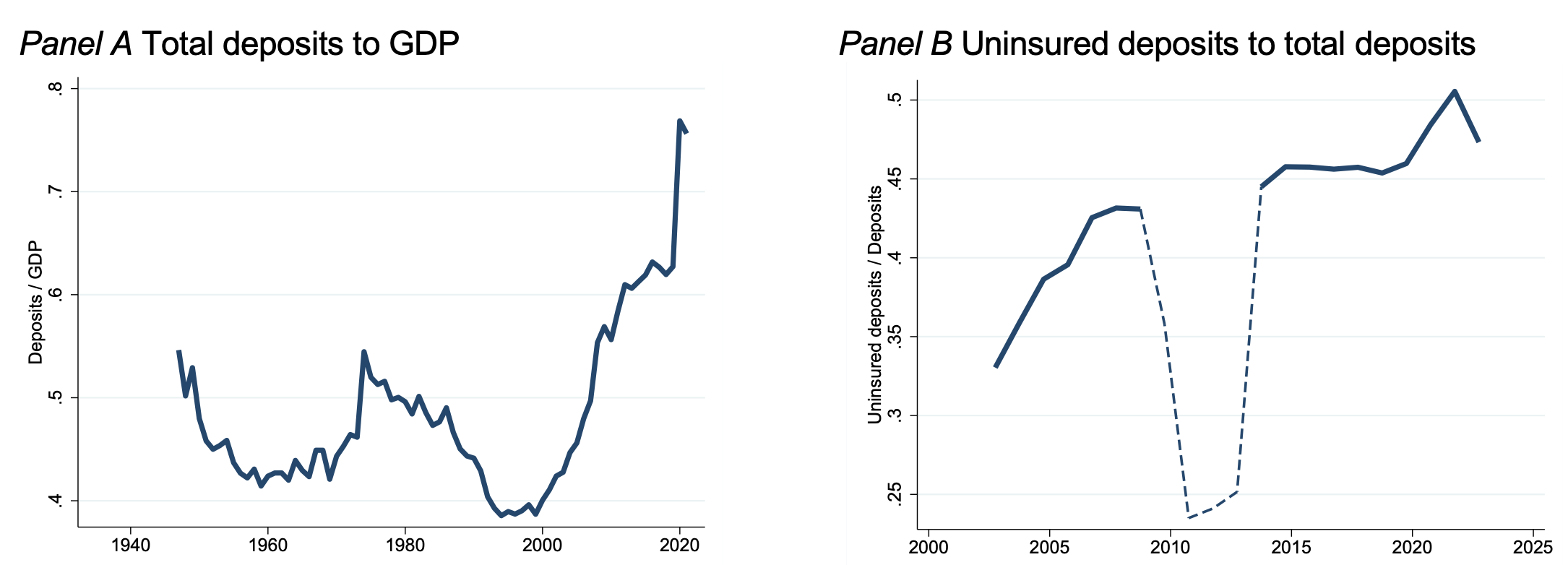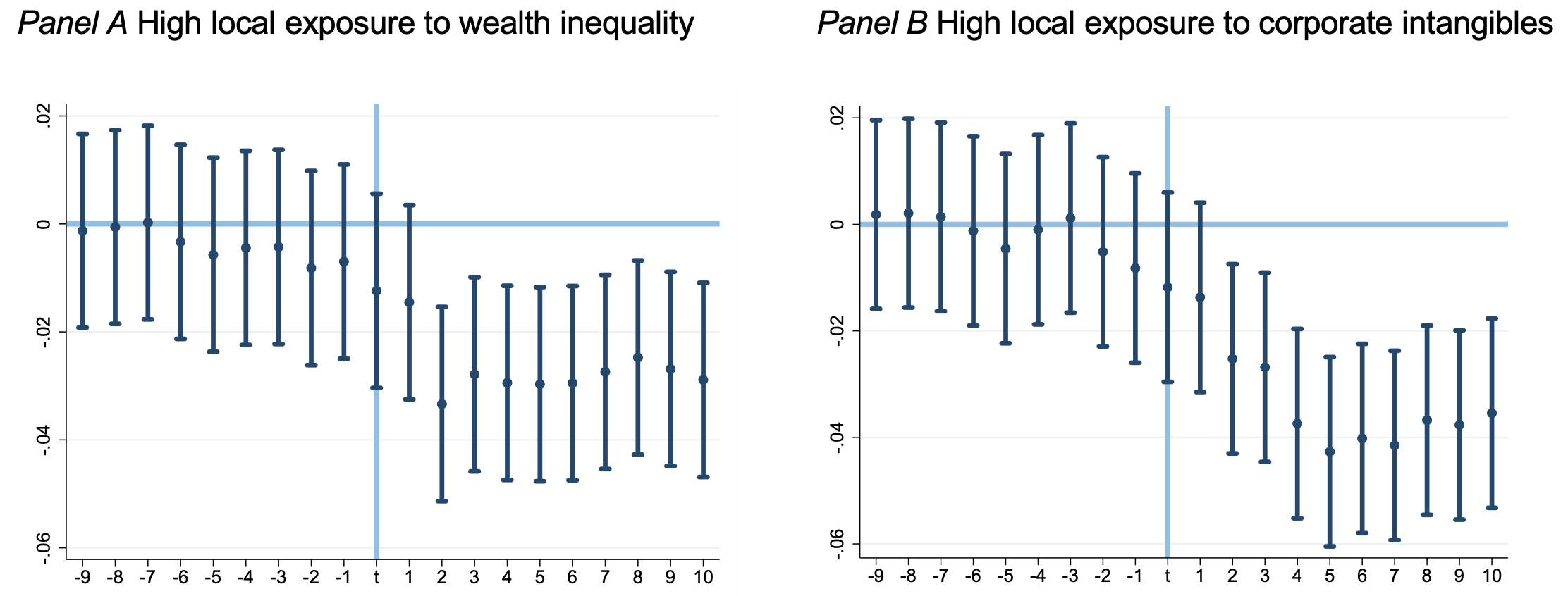Editors' note: This column is part of the Vox debate on "Lessons from Recent Stress in the Financial System"
There is a recurring hypothesis that rising savings may cause financial instability. The logic is simple: if individuals or corporations save more and more, they should be willing to bid more and more for securities that are suitable saving vehicles (e.g. assets that are liquid or safe). If so, the yield on these securities should go down – which is exactly what happened for many government bonds over the past decades.
But private financial institutions also issue securities which are desired as saving instruments – from bank deposits to money market fund shares. A booming demand implies that the prices of these securities are going up, thus raising the incentives of financial institutions to issue more of them. The obvious concern is that banks (or other financial institutions) will issue too many of them, increase leverage to an unsustainable extent, and ultimately become a threat to financial stability (Li 2022). Until today, most of the evidence consistent with this hypothesis comes from the observation that some markets that were arguably catering to the global demand for safe assets – such as securitisation before 2008 – collapsed.
How the saving glut fuelled deposits
In a recent paper (Vuillemey 2023), I am able to tightly link the root causes of the saving glut to financial instability. The existing literature points to three major causes of the saving glut: the rise of emerging economies in which domestic investment opportunities are limited, the growing share of wealth held by the richest households (what Mian et al. 2021 term the ‘saving glut of the rich’), and the boom of corporate savings, notably in intangible-intensive industries (Chen et al. 2017, Falato et al. 2022). Among these three causes, the last two are likely to be channelled at least partially through banks. If so, we should expect the saving glut to translate into greater bank deposits, and even more so in banks directly exposed to wealth inequality or to cash-rich firms.
As documented in Figure 1, a ‘deposit glut’ is indeed a major feature of the saving glut, that had been relatively unnoticed so far. The left panel shows that the deposit-to-GDP ratio in the US had been fluctuating between 40% and 50% for several decades; however, in the past 20 years it boomed considerably to above 75% in 2022. The magnitude of deposits relative to GDP is probably unprecedented in US history. The right panel shows that the ‘deposit glut’ also comes with a rise of uninsured deposits, that is, large-scale deposits beyond the deposit insurance coverage limit. In econometric tests, I confirm that the growth of deposits is, at least in part, driven by banks exposed to the root causes of the saving glut: banks located in states in which wealth inequality is large or increasing, and banks located in counties where intangible-intensive firms (such as tech firms, which are more prone to large savings) are more present. Other causes behind the growth of deposits, including uninsured deposits, are quantitative easing programmes, by which some financial institutions sell assets to the Federal Reserve via banks, thus converting these assets into bank deposits (Acharya et al. 2023).
Figure 1 The rise in bank deposits and uninsured deposits in the US
Notes: This figure illustrates the growth of deposits over the past decades. The left panel plots the ratio of total US bank deposits to the US GDP over the 1947-2022 period. The right panel shows the ratio of uninsured deposits to total deposits in the US banking system. The dotted part corresponds to a period during which the deposit insurance limit was changed.
The Silicon Valley Bank experiment
The failure of Silicon Valley Bank (SVB) in March 2023 provides an ideal setup to test the hypothesis that banks that are more exposed to the saving glut are also more fragile. The failure of SVB itself constitutes anecdotal evidence consistent with this view: deposits had been growing very fast, were mostly collected from corporations from the tech industry, and 93.9% of them were uninsured. This unexpected event can be used to study the stock market reaction of other banks – excluding SVB – when SVB failed. Not surprisingly, one can show that banks with a higher ratio of uninsured deposits faced significantly larger drops in stock prices (by about three percentage points) around 9 March 2023.
But the most interesting finding – illustrated in Figure 2 and confirmed in regression analyses – is that there were also significant differences in stock market reactions between banks with high or low exposure to the root causes of the saving glut. The left panel shows that banks with a high exposure to local wealth inequality experienced significantly lower stock market returns compared to banks located in more equal states. Similarly, the right panel shows that banks with a high local exposure to intangible-intensive firms faced much larger valuation drops than banks with a lower exposure. These findings provide strong support to the hypothesis that the saving glut – whether fuelled by wealth inequality or by the shift to an economy based on intangibles – spurs financial instability. This fact must be considered when analysing recent stress events, in addition to other forces, such as the persistently low capitalisation of banks or the slow recognition of losses on securities held (Admati et al. 2023).
Figure 2 Stock returns of US banks around SVB collapse
Notes: This figure shows the stock returns of US banks with a high local exposure to wealth inequality (left panel) and with a high local exposure to corporate intangibles (right panel), in the 10 days before and after the failure of Silicon Valley Bank on 9 March 2023.
Rethinking deposit insurance
One of the policy responses to the failure of SVB has been to fully insure depositors at this bank. This decision has raised a broader debate about whether deposit insurance coverage should be increased above its current threshold ($250,000 in the US). While my analysis is silent on this issue, it suggests that such a measure could act as a major subsidy to the ‘rich’ in general: the wealthiest households in the economy and the cash-rich corporations. These agents would be offered extra safety at the expense of other agents in the economy.
A related question is whether bank deposits are the most suitable saving product for the wealthiest depositors, be them individuals or corporations. Indeed, even if these deposits are formally uninsured, they may create hold up problem that force governments to intervene and provide them with extra safety ex post. This is exactly what happened following the failure of SVB. Therefore, an open question is whether large uninsured deposits can credibly coexist with insured deposits, or whether they would need to be channelled through other vehicles outside banks (such as money market funds or other saving products not benefiting from government guarantees). Perotti (2023) has recently made interesting propositions to address these issues.
References
Acharya, V V, R S Chauhan, R Rajan and S Steffen (2023), “Liquidity Dependence and the Waxing and Waning of Central Bank Balance Sheets”, Working paper.
Admati, A, M Hellwig and R Portes (2023), “When will they ever learn? The US banking crisis of 2023”, VoxEU.org, 18 May.
Bernanke, B (2005), “The global saving glut and the U.S. current account deficit”, Lecture presented at the Sandridge Lecture, Virginia Association of Economists, Richmond, Virginia, 10 March.
Chen, P, L Karabarbounis and B Neiman (2017), “The global rise of corporate saving”, Journal of Monetary Economics 89: 1–19.
Falato, A, D Kadyrzhanova, J Sim and R Steri (2022), “Rising intangible capital, shrinking debt capacity, and the U.S. corporate savings glut”, Journal of Finance 77: 2799–2852.
Li, Y (2022), “Fragile new economy: Intangible capital, corporate savings glut, and financial instability”, American Economic Review, forthcoming.
Mian, A, L Straub and A Sufi (2021), “The saving glut of the rich”, Working paper.
Perotti, E (2023), “Learning from Silicon Valley Bank’s uninsured deposit run”, VoxEU.org, 5 May.
Vuillemey, G (2023), “From the Saving Glut to Financial Instability: Evidence from the Silicon Valley Bank Failure”, CEPR Discussion Paper No. 18107.





